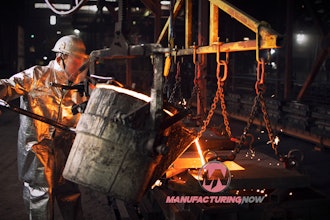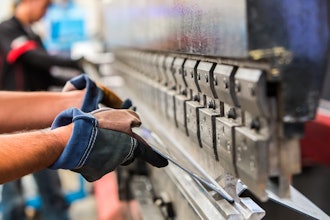Running on the combined horsepower of Quadro and Tesla GPUs, NVIDIA’s new Maximus-powered workstations are expected to remove what has always been an inevitable part of engineering simulation -- long anxious waits. Performing the dual functions of a traditional desktop machine and a mini-HPC (high performance computing) system, these workstations are designed to let you run your professional CAD software, visualize your design in photorealistic graphics, and perform finite element analysis to determine its structural integrity -- all at the same time.
Let me explain. There’s a good reason for engineers to postpone simulation jobs, especially those involving complex assemblies. The sheer volume of 3D geometric data could take up all the memories in a standard workstation. Similarly, the computation required may take up all the processing power available in the CPU, bringing the entire machine to a crawl. Therefore, engineers who cannot afford to put other operations on hold -- operations such as CAD modeling, data management, and document processing -- have learned to strategically time their simulation jobs so they start running during lunch time and after hours.
The engineers who have access to a high-performance computing (HPC) cluster fare a little better. They have the option to submit their computing-intensive jobs to the cluster, leaving their machine free to run CAD software or render a photorealistic scene. But the cluster is usually a resource shared by a number of engineers, often overburdened with more jobs than it can process in a timely fashion. Should you increase the thickness of your engine? Should you decrease the height of the mounting bracket? You wouldn’t be able to make an informed decision until you see the results of your stress and thermal analysis. So, even though your personal workstation is still running at full speed, your workflow may come to a halt, depending on the length of the HPC job queue.
In today’s fast-paced manufacturing, getting to market faster than your competitors gives you -- and your clients -- a huge financial advantage. So any wait time that forces you to put critical decisions on hold can be detrimental to the project. Yet, the suspenseful wait – those anxious hours and days before you find out whether your design can withstand the anticipated load and heat – is an inevitable part of simulation-driven design projects.
NVIDIA Maximus technology, which creates a new class of workstations powered by a combination of NVIDIA graphics processing units (GPUs), is designed to reduce the nail-biting suspense by giving you the option to run simulation jobs on your own machine, without depriving other applications of the computing power they need.
Engineers may not be accustomed to think of their personal workstation as an HPC system. However, the NVIDIA Tesla C2075 GPU inside Maximus-powered workstations functions like a mini-HPC system, giving you the parallel-processing power you need to run many simulation exercises typically delegated to HPC clusters. For highly complex, system-wide simulations (for example, studying the mechanical behaviors of an entire aircraft), you’ll probably continue to rely on an HPC cluster. But for mid-level simulation tasks (for example, fluid flow inside a medical equipment’s chamber), an NVIDIA Maximus-powered workstation should be more than adequate. In many cases, you may be able to determine the fitness of your design as you continue to refine its geometry in a CAD program and its aesthetics in a rendering program.
Previously, running a simulation job on a workstation provides you with the perfect excuse to take a lunch break: The machine is coming to a grinding halt, so what else is there to do? With an NVIDIA Maximus workstation, you’ll have to find a new excuse for a break.
Click here for more information.


















